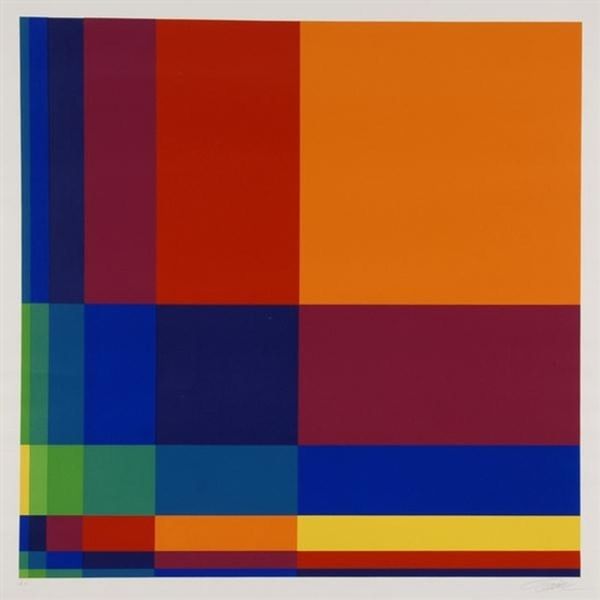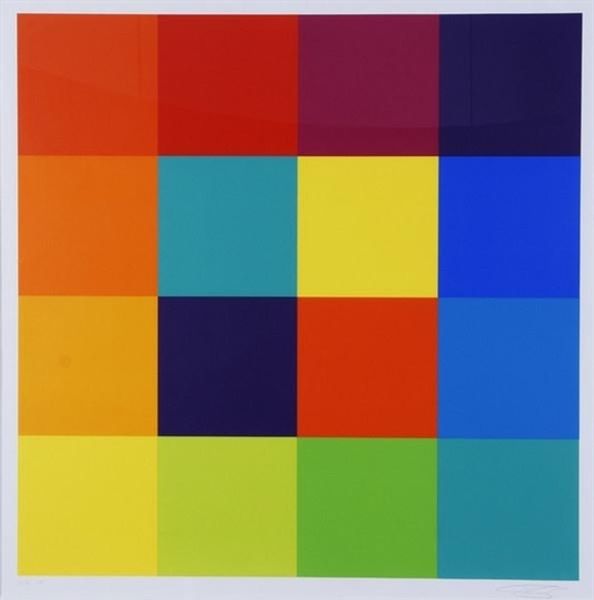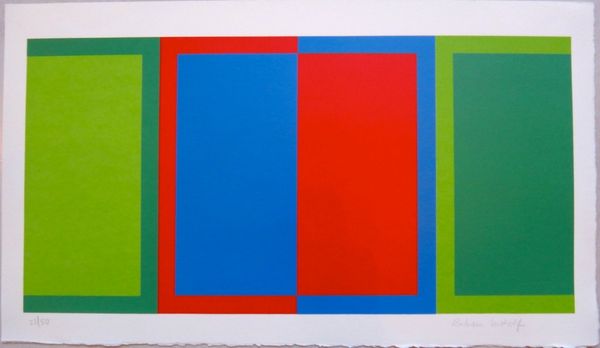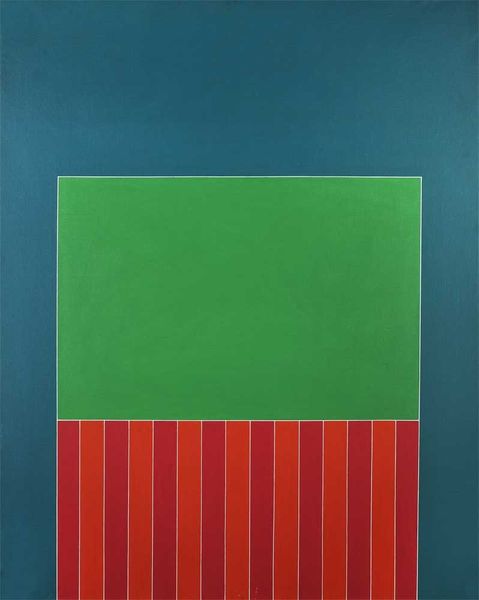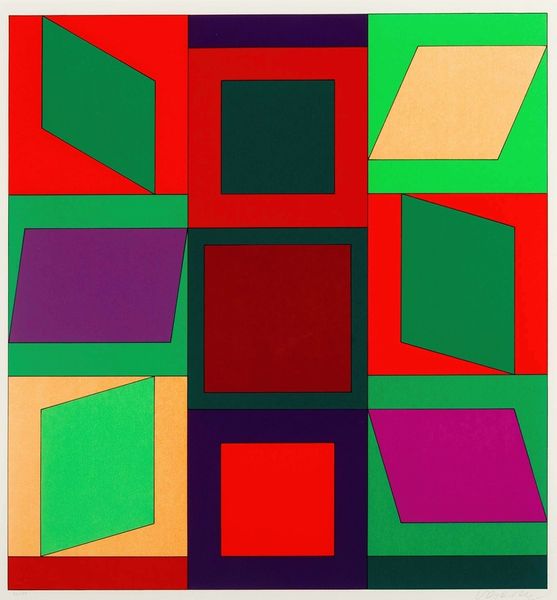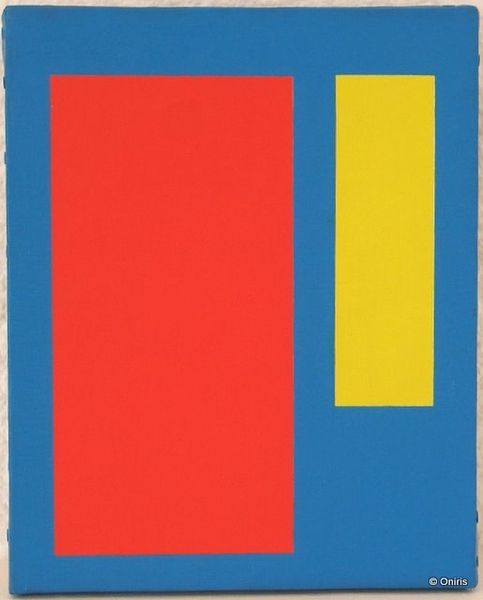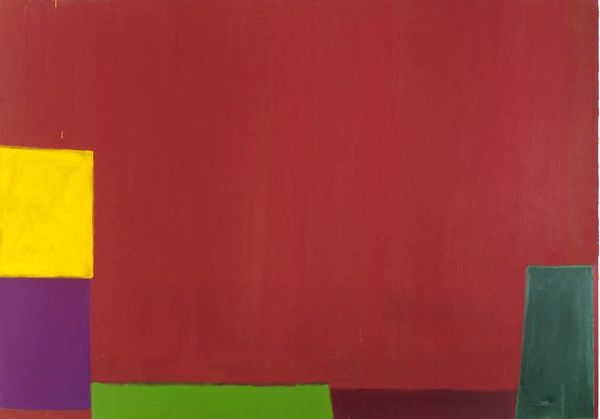
painting, acrylic-paint
#
painting
#
colour-field-painting
#
acrylic-paint
#
geometric pattern
#
abstract pattern
#
geometric
#
vertical pattern
#
abstraction
#
line
#
modernism
#
hard-edge-painting
Copyright: Jean-Francois Dubreuil,Fair Use
Jean-Francois Dubreuil created this painting, titled Q2, using acrylic on canvas. It's an arrangement of squares and rectangles in a variety of bright colors. The hard-edged geometric forms place Dubreuil’s work within a modernist tradition that stretches back to the early 20th century. But what are the social implications of non-representational art? Modernist abstraction aimed at a universal language of form, one that would supposedly transcend cultural boundaries. However, such moves towards pure form often occurred within specific institutional contexts, such as art schools and museums, and were supported by particular critical discourses. We can investigate this artwork through the history of modernism and its institutions. Did the drive toward abstraction open up a new space for creativity? Or did it narrow the scope of art by excluding the social world? The interpretation of art is always tied to social and institutional circumstances, and research into those contexts can reveal the meaning behind the art.
Comments
No comments
Be the first to comment and join the conversation on the ultimate creative platform.
